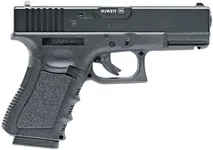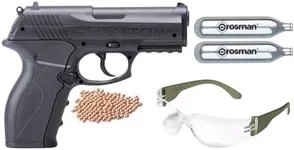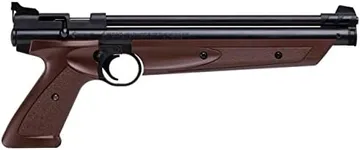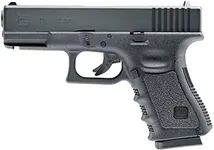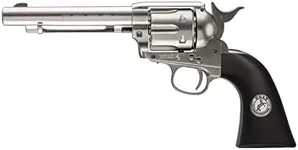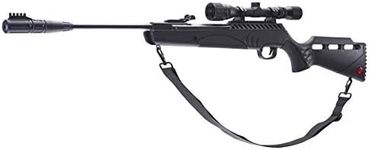Buying Guide for the Best Air Guns
Choosing the right air gun can be a rewarding experience if you know what to look for. Air guns come in various types and are used for different purposes such as target shooting, hunting, or plinking (casual shooting). Understanding the key specifications will help you make an informed decision that best suits your needs. Here are the main factors to consider when selecting an air gun.Type of Air GunAir guns come in several types, including spring-piston, gas piston, CO2, and pre-charged pneumatic (PCP). The type of air gun determines its power source and performance. Spring-piston and gas piston air guns are popular for their simplicity and reliability, making them great for beginners and general use. CO2 air guns offer semi-automatic firing and are ideal for casual shooting. PCP air guns are known for their high power and accuracy, suitable for serious target shooting and hunting. Choose the type based on your intended use and experience level.
CaliberCaliber refers to the diameter of the pellets used in the air gun. Common calibers include .177, .22, and .25. The .177 caliber is the most popular for target shooting and plinking due to its high velocity and flat trajectory. The .22 caliber offers more stopping power and is preferred for small game hunting. The .25 caliber provides even more power and is suitable for larger game. Select the caliber based on whether you prioritize accuracy, power, or a balance of both.
VelocityVelocity is the speed at which a pellet is fired from the air gun, measured in feet per second (FPS). Higher velocity generally means better accuracy and longer range. For target shooting, a velocity of 500-800 FPS is usually sufficient. For hunting, a velocity of 800-1200 FPS is recommended to ensure enough power to humanely take down game. Consider your primary use to determine the appropriate velocity range for your air gun.
AccuracyAccuracy is crucial for both target shooting and hunting. Factors that affect accuracy include the quality of the barrel, the type of sights or scope, and the consistency of the power source. Look for air guns with rifled barrels for better pellet stability and accuracy. Adjustable sights or a good quality scope can also enhance your shooting precision. If accuracy is a top priority, invest in an air gun with features that support consistent and precise shooting.
Power SourceThe power source of an air gun can be spring-piston, gas piston, CO2, or pre-charged pneumatic (PCP). Spring-piston and gas piston air guns are powered by a mechanical spring or gas ram, offering simplicity and ease of use. CO2 air guns use disposable or refillable CO2 cartridges, providing semi-automatic firing but requiring regular cartridge replacement. PCP air guns are powered by compressed air stored in a reservoir, offering high power and accuracy but needing a pump or scuba tank for refilling. Choose a power source that matches your convenience and performance needs.
Weight and ErgonomicsThe weight and ergonomics of an air gun affect how comfortable it is to handle and shoot. Lighter air guns are easier to carry and maneuver, making them suitable for younger shooters or prolonged use. Heavier air guns may offer better stability and reduced recoil, which can improve accuracy. Ergonomics, such as the design of the stock and grip, also play a role in comfort and ease of use. Consider your physical strength and shooting style when selecting an air gun with the right weight and ergonomic features.
Noise LevelThe noise level of an air gun can be an important factor, especially if you plan to use it in a residential area or for hunting. Spring-piston and gas piston air guns tend to be louder due to the mechanical action, while CO2 and PCP air guns are generally quieter. Some air guns come with built-in noise dampening features to reduce the sound. If noise is a concern, look for air guns with quieter operation or additional noise reduction technology.

